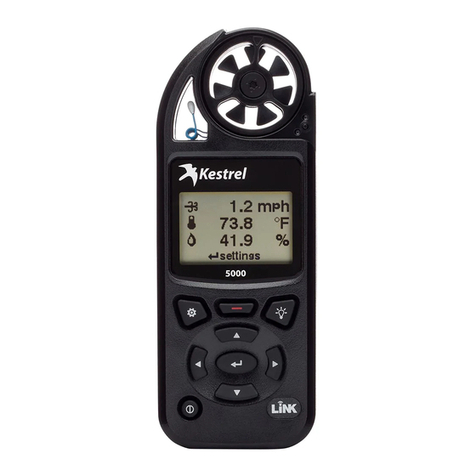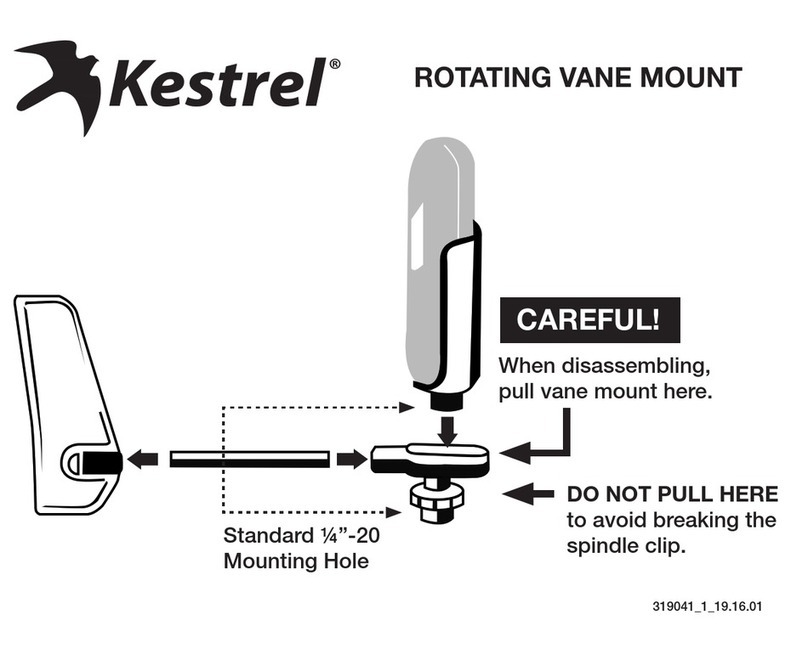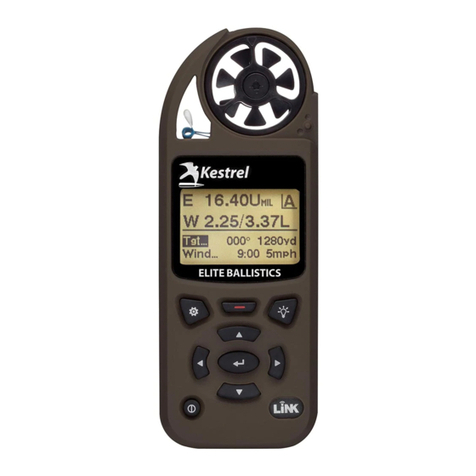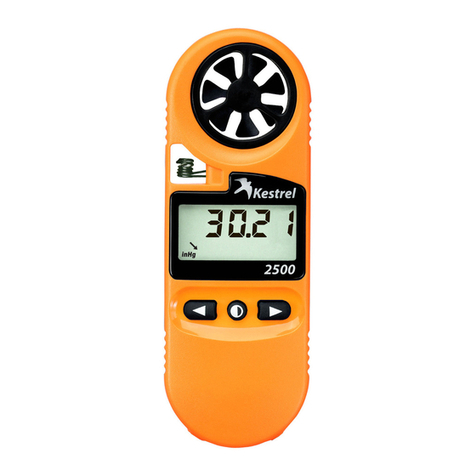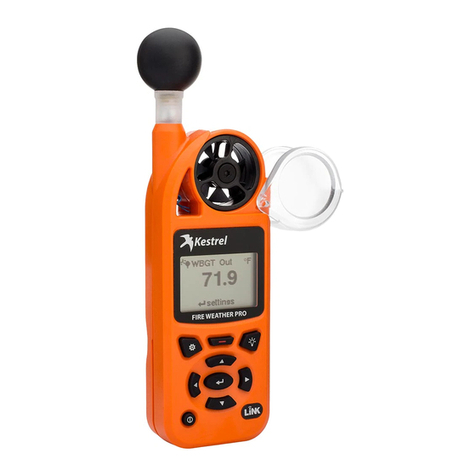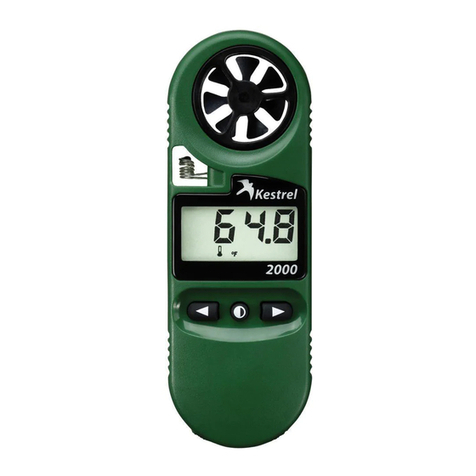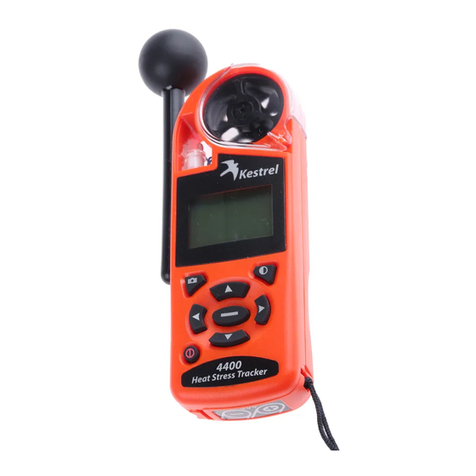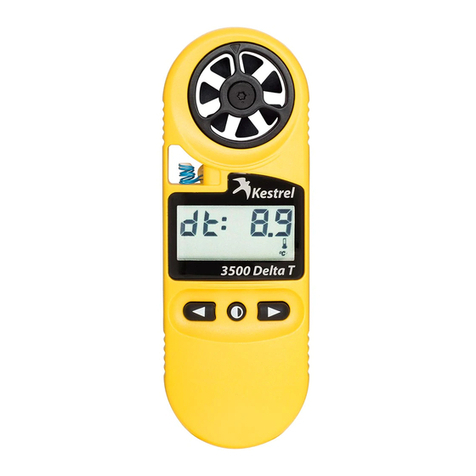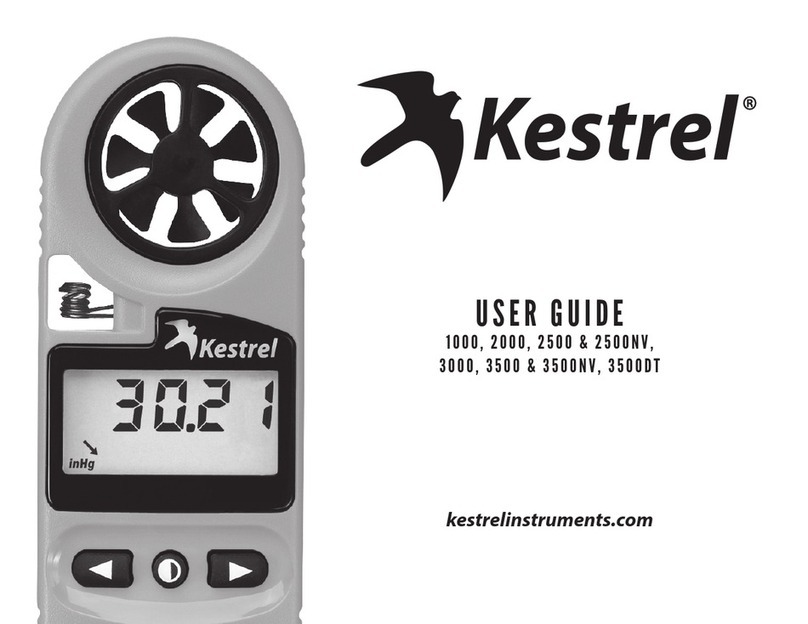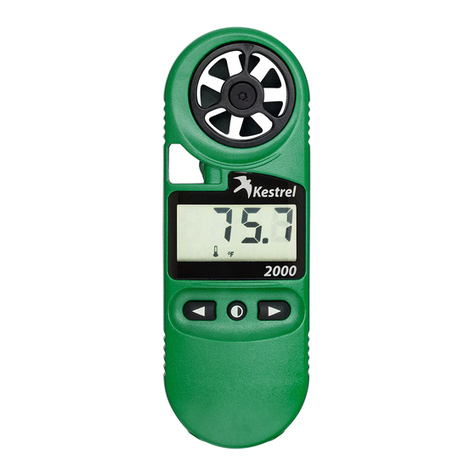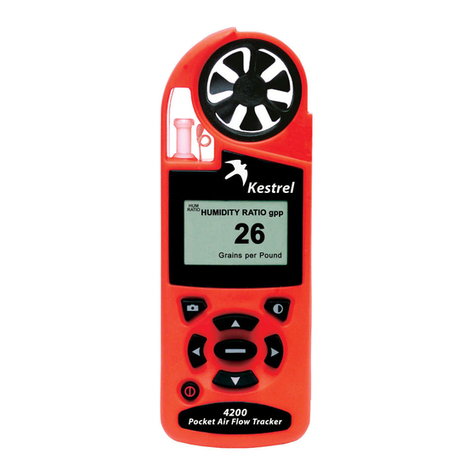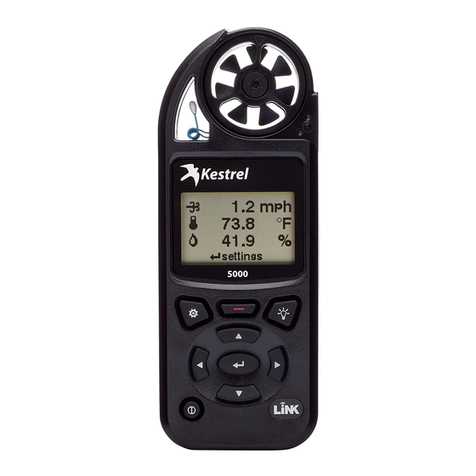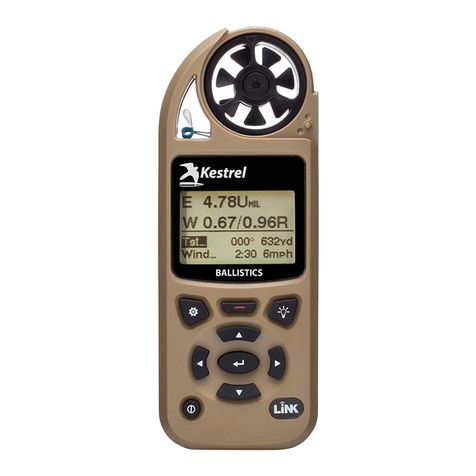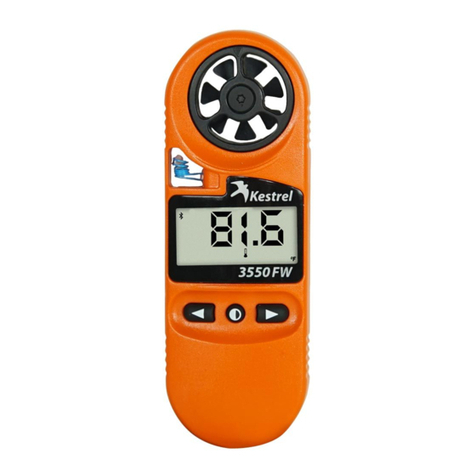
watch batteries are sold).Wipe the battery clean of any fingerprints and insert the positive
(+) pole up,angling the battery downward and pressing it firmly into place.When replacing
the battery door, be sure to keep the black rubber o-ring seated in the groove on the
case back.
Why does the Impeller Appear Imbalanced?
It is NORMAL for the impeller to oscillate as it comes to a stop.It is NOT imbalanced. Rather,
it contains a very small magnet that responds to the earth’s magnetic fields.This does not
affect the accuracy of the wind speed readings because the magnetic field applies both a
braking and an accelerating force which cancel each other.The impeller has been calibrated
to provide wind speed readings accurate to within at least ± 3%.
High Speed Use
After several hours of sustained operation over 25 M/S (~49 KT, 90 KM/H, 56 MPH or 4,923
FPM), the Kestrel will lose some accuracy due to wear of the
sapphire bearings in the impeller.
Replacing the Impeller
You may recalibrate the wind speed readings by replacing
the impeller. Press FIRMLY on the sides of the black impeller
housing with your thumbs to remove the entire assembly.
When inserting the new impeller, be sure the arrow is facing
the display side of the unit, and is aligned with the top of
the meter. Press on the sides of the housing rather than
the center. Replacing the Impeller
9
Taking Accurate Humidity, Heat Stress and Dewpoint Measurements
The patented system for measuring relative humidity allows for extremely fast and accurate
readings.The sensor is located in the large hole on the rear of the unit. Even extreme and
abrupt changes in the surrounding humidity will be measured within several minutes.To test
this, place your hand around the rear of the unit.Within several seconds, the humidity will
increase dramatically. After removing your hand, the humidity will quickly begin to decrease.
Next, place your hand near the rear of the unit and wave the unit back and forth. The
humidity will not change because the air flow is diluting the humidity from your hand.
This example shows the importance of keeping air flow past the sensor while taking a
measurement. If there is no natural air flow past the sensor, wave the unit back and forth.
It is also reasonable to lay the unit down on a solid surface for several minutes to allow the
sensor to adjust.
Sensor Calibration
All the sensors have been factory calibrated to be accurate within specifications. For
recalibration, you may either return it to Nielsen-Kellerman for factory calibration, or contact
NK for field calibration instructions. Humidity Field Calibration Kits are also available for
sale online.
10
BEAUFORT SCALE
The Beaufort Scale is a system for estimating
wind force without the use of instruments based
on the visible effects of the wind on the physical
environment.The behavior of smoke, waves, trees,
etc., is rated on a 13 point scale.The scale was
devised in 1805 by the British naval Commander
Sir Francis Beaufort (1774-1857) and is still
commonly used by mariners.
KESTREL POCKET WEATHER METERS
WARRANTY
NK does not believe in“disposable electronics.”We know that Kestrel Meters don’t typically
lead pampered lives, and we design them for years of performance in tough conditions.
Every Kestrel is designed and manufactured at NK’s facility in Boothwyn, PA. We guarantee
every Kestrel Pocket Weather Meter to be free of defects in materials and workmanship
for a period of TWO YEARS from your date of purchase. We will repair or replace any
defective product or part when notified within the warranty period, and will return the
product via domestic ground shipping at no charge.Additionally, each Kestrel has a 30-day
money back guarantee.
The following issues do not result from a manufacturing defect and are not covered under
this warranty: damage due to improper use or neglect (including corrosion), impact damage,
Force Description Kts
0 Calm 0
1 Light Air 1-3
2 Light Breeze 4-6
3 Gentle Breeze 7-10
4 Moderate Breeze 11-16
5 Fresh Breeze 17-21
6 Strong Breeze 22-27
7 Near Gale 28-33
8 Gale 34-40
9 Strong Gale 41-47
10 Storm 48-55
11 Violent Storm 56-63
12+ Hurricane 64+
11
modifications or attempted repairs by someone other than an authorized NK repair agent,
impeller failure not caused by a manufacturing defect, normal wear from use of the product,
failed batteries, and re-calibration beyond 30 days from your date of purchase.
Your warranty period will be measured from your date of purchase. The best way to ensure
full warranty coverage is to REGISTER your NK product promptly on our website:
www.kestrelweather.com. We keep your registration information strictly confidential and
do not sell it, share it, or use it for anything but product-related information bulletins (which
you may decline receiving). If you do not register and cannot provide proof of purchase,
your warranty period will be measured from our date of manufacture, determined by
serial number.
We request that you contact NK if you feel your product is not working properly. We can
often solve product issues by phone or e-mail, saving you the time and expense of returning
the unit. If we require the product to be returned, we will issue a Return Authorization to
expedite the handling of your warranty claim.
The Kestrel Pocket Weather Meters are covered by the following patents: 5,783,753,
5,939,645, 6,257,074, and 7,059,170.
LIFETIME CUSTOMER CARE WARRANTY
NK wants you to be an NK customer for life, so we take care of you even beyond the terms of
the above warranty with our Customer Care Program.Trade-in any Kestrel Pocket Weather
Meter, no matter the age or condition, and receive a generous discount on the replacement
12
